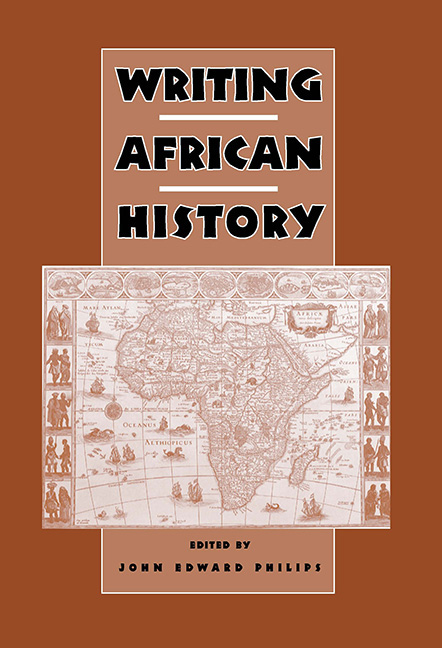Book contents
- Frontmatter
- Dedication
- Contents
- Acknowledgments
- Introduction
- Part I Background
- Part II Sources of Data
- 2 Archaeology and the Reconstruction of the African Past
- 3 Writing African History from Linguistic Evidence 86
- 4 Physical Anthropology and African History
- 5 The Importance of Botanical Data to Historical Research on Africa
- 6 Oral Tradition as a Means of Reconstructing the Past
- 7 Oral Sources and the Challenge of African History
- 8 Arabic Sources for African History
- 9 European Documents and African History
- 10 Mission and Colonial Documents
- Part III Perspectives on History
- Part IV Conclusion
- Contributors
- Index
- Miscellaneous Endmatter
5 - The Importance of Botanical Data to Historical Research on Africa
from Part II - Sources of Data
Published online by Cambridge University Press: 11 May 2017
- Frontmatter
- Dedication
- Contents
- Acknowledgments
- Introduction
- Part I Background
- Part II Sources of Data
- 2 Archaeology and the Reconstruction of the African Past
- 3 Writing African History from Linguistic Evidence 86
- 4 Physical Anthropology and African History
- 5 The Importance of Botanical Data to Historical Research on Africa
- 6 Oral Tradition as a Means of Reconstructing the Past
- 7 Oral Sources and the Challenge of African History
- 8 Arabic Sources for African History
- 9 European Documents and African History
- 10 Mission and Colonial Documents
- Part III Perspectives on History
- Part IV Conclusion
- Contributors
- Index
- Miscellaneous Endmatter
Summary
This chapter will apply a broad definition of botanical evidence, as it incorporates information from the disciplines of agronomy, genetics, anthropology, archaeology, and ethnographic records. The subject matter is vast, touching on many additional fields, including art, religion, economics, geography, the pharmaceutical, mystical, ceremonial, and ritual uses of plants, and the symbolic meanings of plants in art and decoration, myths, legends, and folklore. When illustrations are required, the examples will refer to sesame, my own specialty.
Plants have altered the course of human history. Prehistoric huntergatherers depended on their knowledge of native food plants. From earliest time, plants provided people with food, shelter, clothing, fuel, medicine, and other necessities. The rise of agriculture provided a food source reliable enough to sustain advanced village society. People who once collected plants from the wild came to rely on crops grown for food, thus making stable societies possible and eventually leading to the advances of great civilizations.
Plant remains, such as flowers in the form of funerary bouquets, garlands, or wreaths, fruits, and above all, seeds, can reveal what people ate and used in trade in early historic times. One example of plant remains that can serve as valuable historical resources is the complete inventory of plants found in the tomb of King Tutankhamon. The inventory was finally completed by a student, Christian de Vartevan, after the plants sat untouched in storage at the Royal Botanic Gardens, Kew, for sixty years after the death of Leonard Boodle, who had been studying them.
Seeds can reveal whether a plant was wild or domesticated. One well-defined morphological feature in cereals is the rachis, which attaches the seed to the receptacle. Cultivated seeds often remain attached to the plant at maturity, while wild seeds possess a brittle rachis that breaks off upon maturity, causing the seed to shatter. Seed shattering is an important trait that can be used to distinguish wild species from their cultivated relatives, thus identifying a morphological change that occurs during plant domestication. Wheat species possess tremendous polymorphisms in reproductive parts, and the plants can frequently be categorized on the basis of these as diploid, tetraploid, or hexaploid, and often as cultivated or wild. Polyploid chromosome numbers frequently increase seed or fruit size, and this character also suggests that a plant has undergone domestication.
- Type
- Chapter
- Information
- Writing African History , pp. 152 - 168Publisher: Boydell & BrewerPrint publication year: 2005

